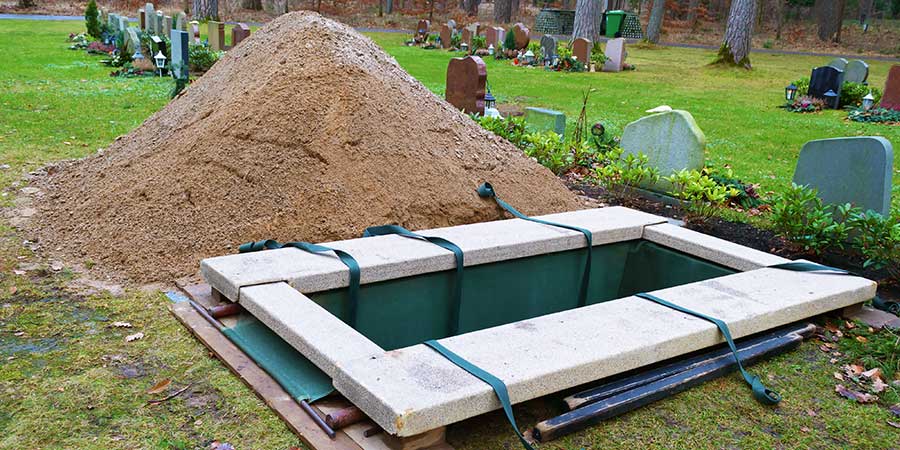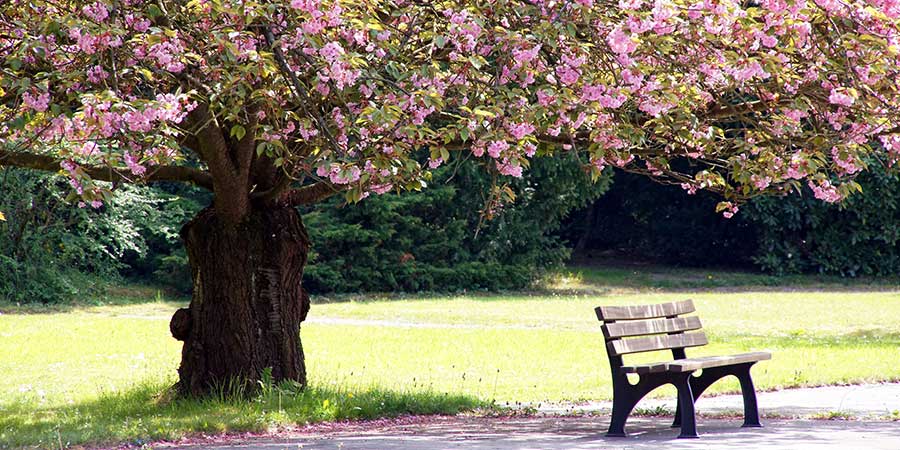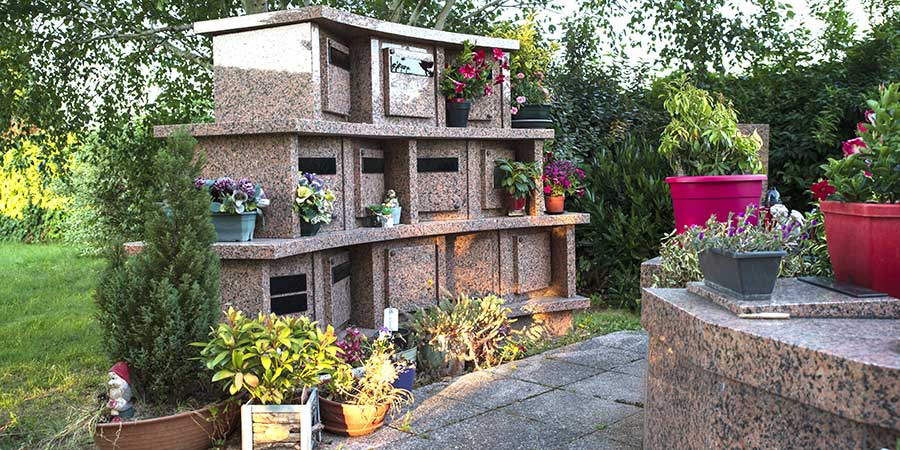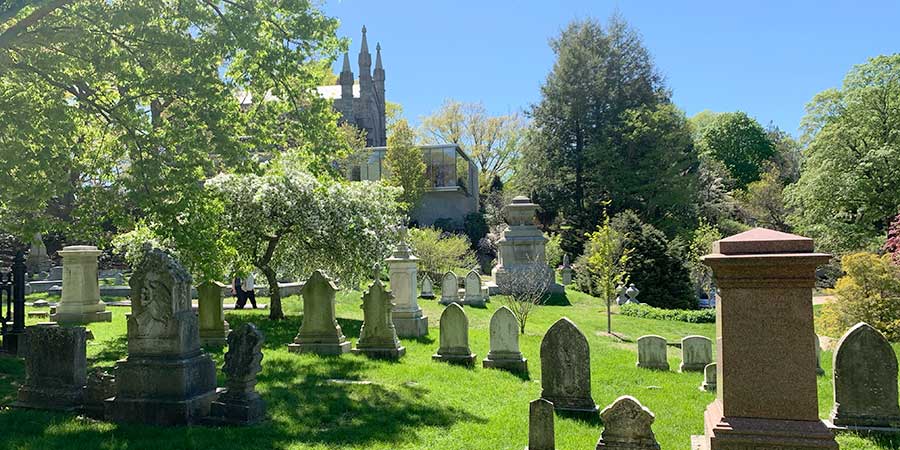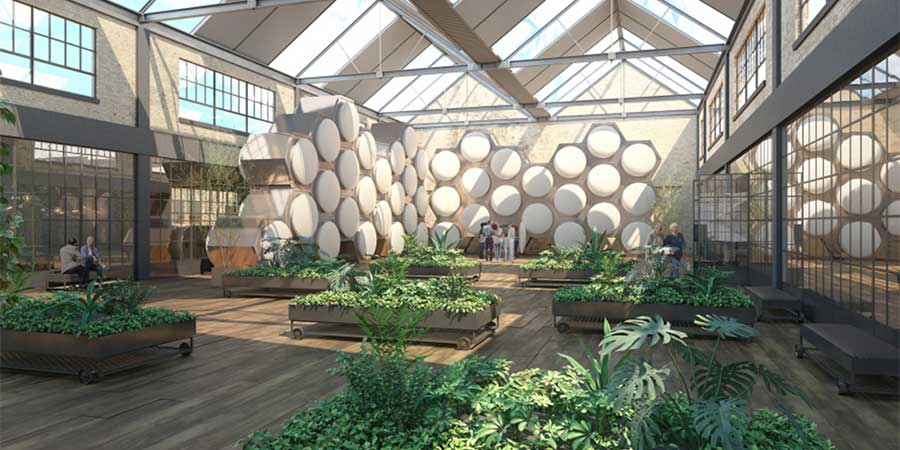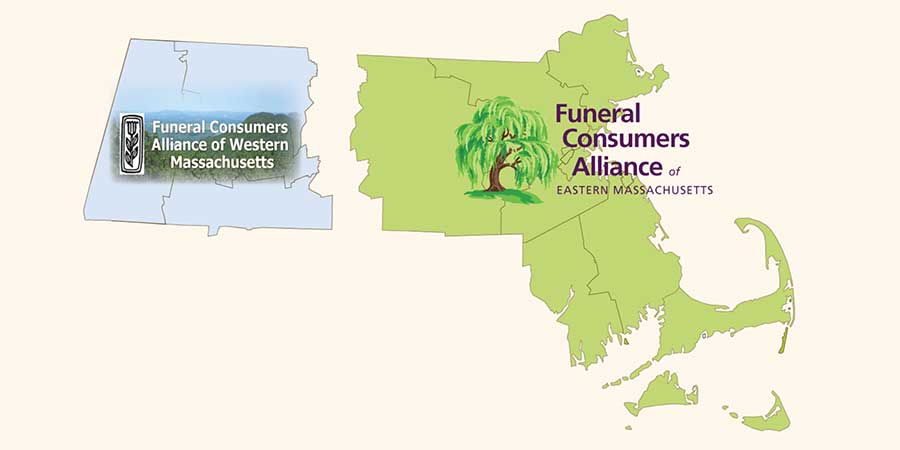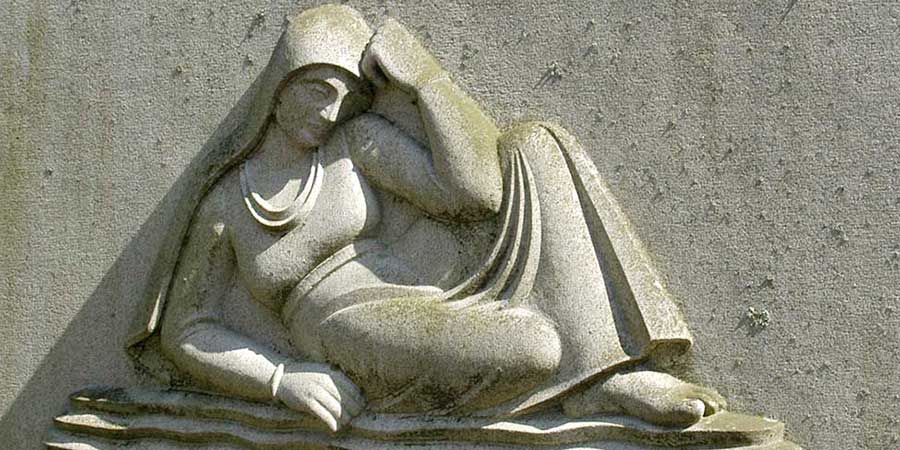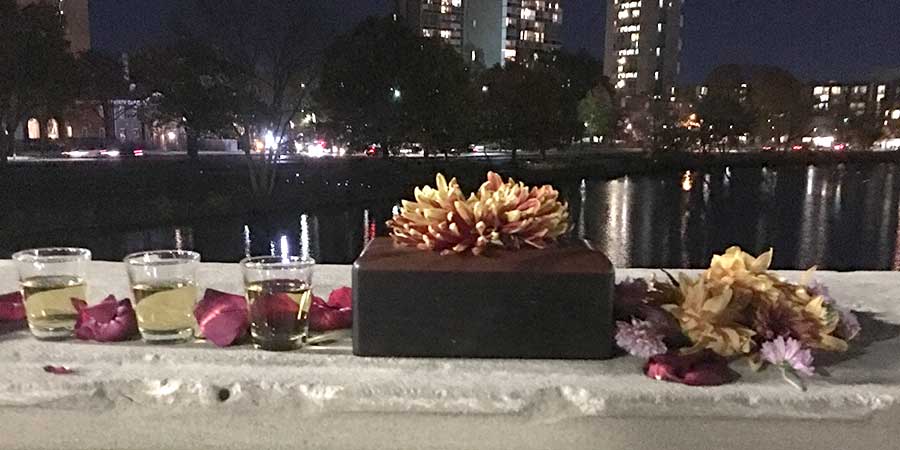This is a 79 minute video showing the program portion of the FCAEMASS Annual Meeting, held October 21,2023. Below you will find a transcript of Eva Moseley’s presentation.
Green Burial
by Eva Mosely
 A Green burial is a relatively simple way to care for a dead human body, with no embalming or other chemicals; a biodegradable container of pine or other soft wood, or cardboard or wicker, or a shroud of natural fabric: wool, cotton, silk, linen –or even no container at all. The grave is 3.5 or 4 feet deep, and has no marker or only a flat one of wood or local stone. FCAEM works for consumer choice and many people still choose embalming, an elaborate casket + an outer container required by most cemeteries. But some of us were entranced and relieved when such simple ways reappeared after more than a century of elaborate, expensive methods promoted, sometimes imposed, by the funeral industries.
A Green burial is a relatively simple way to care for a dead human body, with no embalming or other chemicals; a biodegradable container of pine or other soft wood, or cardboard or wicker, or a shroud of natural fabric: wool, cotton, silk, linen –or even no container at all. The grave is 3.5 or 4 feet deep, and has no marker or only a flat one of wood or local stone. FCAEM works for consumer choice and many people still choose embalming, an elaborate casket + an outer container required by most cemeteries. But some of us were entranced and relieved when such simple ways reappeared after more than a century of elaborate, expensive methods promoted, sometimes imposed, by the funeral industries.
Why green burial? I’m going to tell you about 3 experiences that had nothing to do with green burial but that helped steer me toward it, long before the green burial movement began.
First, in my 20s I became interested in Hinduism, and particularly its view of the world and life as cyclical: the Earth rotating on its axis and revolving around the sun; animals needing oxygen and exhaling CO2; plants needing CO2 and giving off oxygen. Our culture emphasizes the opposite: it not only relies on non-renewable resources—burning fossil petroleum, etc.; it also strives for continuous one-way growth, which is unsustainable on a finite planet. But with green burial, our bodies become part of the cycle of life and death.
Then in my 30s I had a Cub Scout den in Vermont & one month I had the boys build a compost pile, with plant waste from my garden and fresh cow manure we got from a friend’s barn. Two days later, I stuck a metal rod into the pile and in moments it was too hot to touch. Plant and animal waste was decomposing and would enrich the soil, which would feed new plants, which would feed us and other animals. Our bodies, buried naturally, can likewise enrich the soil.
Third, when my mother died 50+ years ago, my brother and I had no idea what to do. She had never even let us go to a funeral. We crossed the street from her Jewish hospital to a Jewish undertaker, who showed us heavy, expensive coffins. But off in a dark corner was a plain pine box. I said, “I want that.” He said it was only for the Orthodox, and sold us something much more expensive. I never forgot that simple, biodegradable box.
If you envision a cyclical world, with waste used to feed new life, and bodies buried so as to feed the Earth, green burial is what you get. (I mean Earth with small e and capital E.)
Some of you might have had such miscellaneous experiences that led you to green burial. Perhaps we can hear about some, but 1st what is the state of green burial in Massachusetts?
At an FCAEM annual meeting in about 2006, green burial was mentioned and some of us who were interested found each other. We became a project or committee of Funeral Consumers Alliance of EASTERN Massachusetts and Funeral Consumers Alliance of WESTERN Massachusetts, and in about 2010 we became a freestanding organization, Green Burial Massachusetts. We worked with land trusts, as they know about land and for burial you need land. We’ve looked at many parcels of land. Massachusetts seems to consist largely of wetlands and rock ledges—neither usable for burials—and in trying to establish a new burial ground (green or not) you have to get approval from one or more boards of health (each city and town has one). That’s just a glimpse of some challenges.
But one land trust has a donor and staff committed to establishing a green conservation cemetery, “conservation” meaning that the land is permanently protected from development. So far, the right land hasn’t become available. Meantime Green Burial Massachusetts has spread the word; its own search for land brings the idea to many people. It issues a quarterly online newsletter, has held a workshop for would-be green-burial advocates (a 2nd is planned for January), we’ve tabled at conferences (Councils on Aging, Organic Farming, etc.) and compile a Massachusetts Cemeteries Database, surveying cemeteries in all 351 cities and towns about their green-burial policies. While most land trusts are absorbed by other concerns, more and more towns are devoting portions of existing cemeteries to green burial, making them hybrid cemeteries.
I leave you with a few thoughts:
- We call the usual burial with embalming, casket, vault, and upright stone conventional, not traditional. It’s green burial that is traditional.
- In a green burial everything that goes into the ground must be biodegradable. If you remember nothing else, remember that requirement.
- GBM’s aim is to establish one or more conservation cemeteries OPEN TO ALL, regardless of residence, religion, or anything else.
- Anyone who cares about the environment and considers global warming a serious threat should choose environmentally sound after-death care — although, as you’ve probably guessed, I’m committed to green burial.
- Things you can do: Join GBM. Read the newsletter; consult the web site; attend the upcoming workshop. Tell the people responsible for cemeteries in your city or town, as well as local funeral directors, that you want a green method, and that green burial is rising in popularity because it’s better for people and for the earth/Earth.


